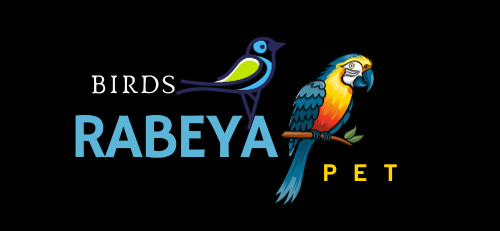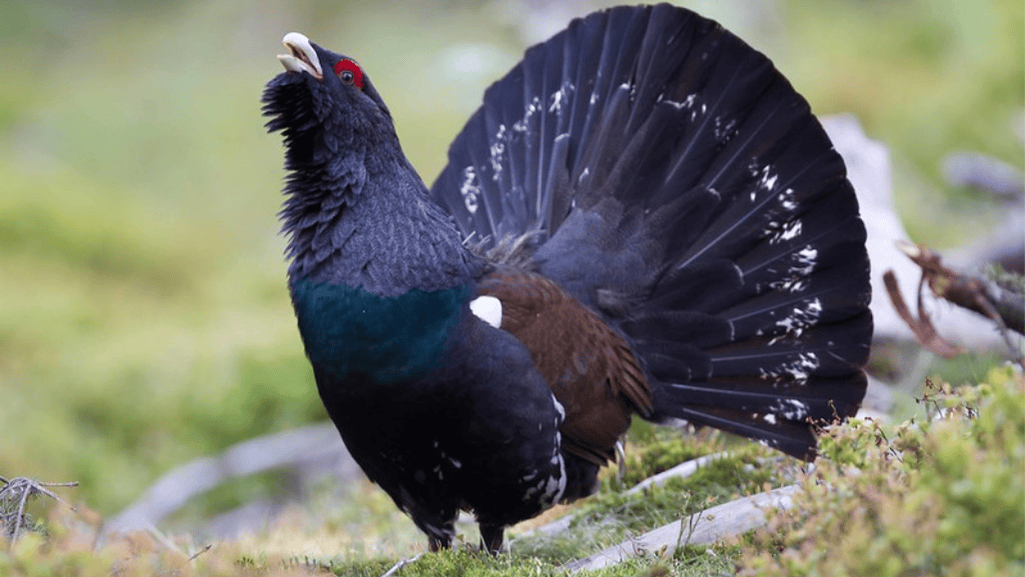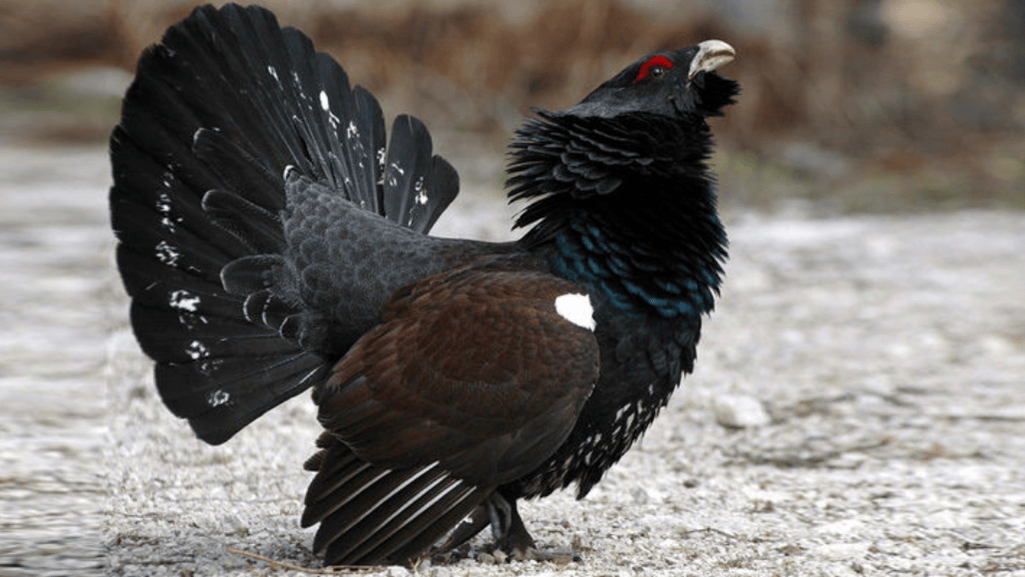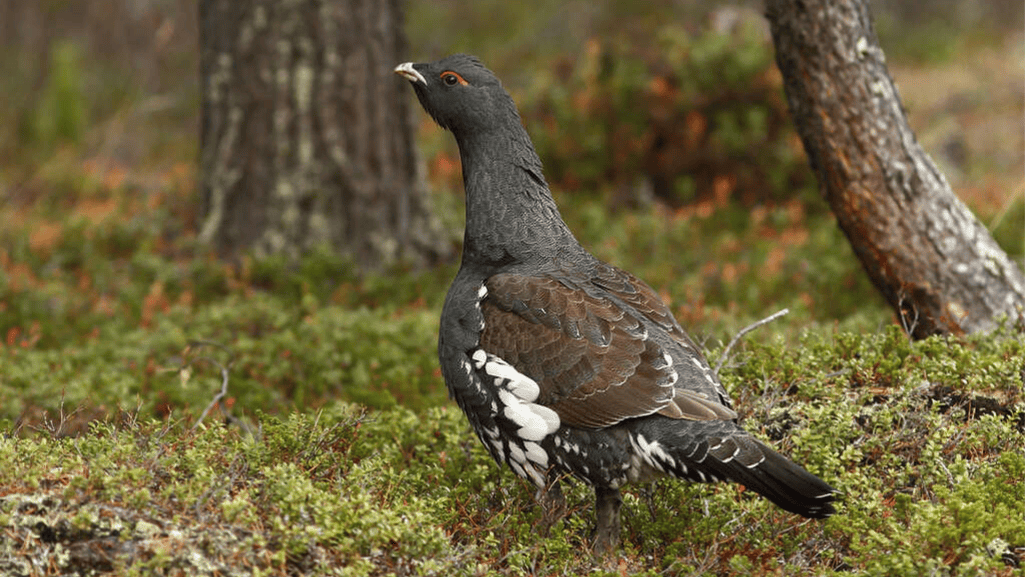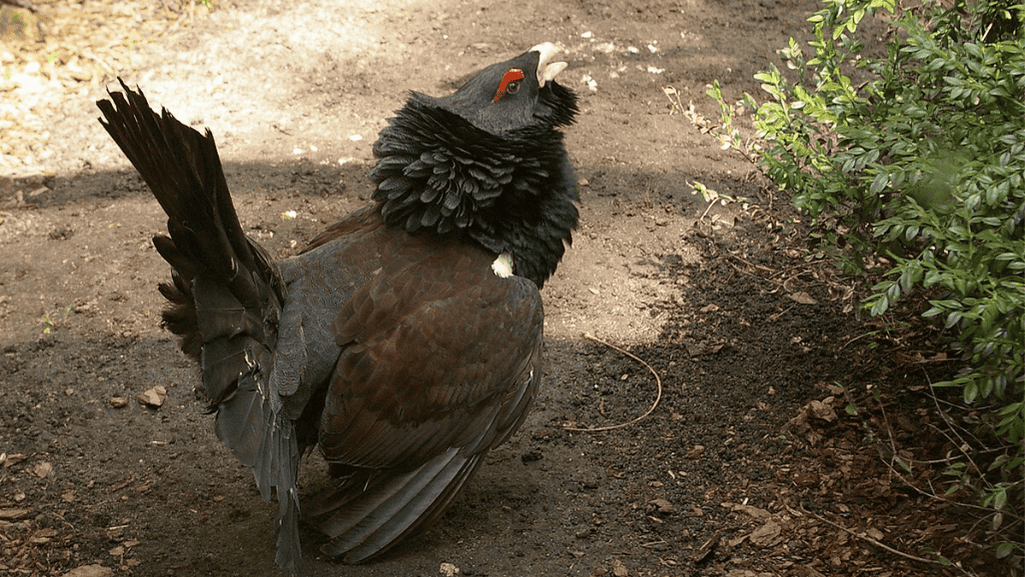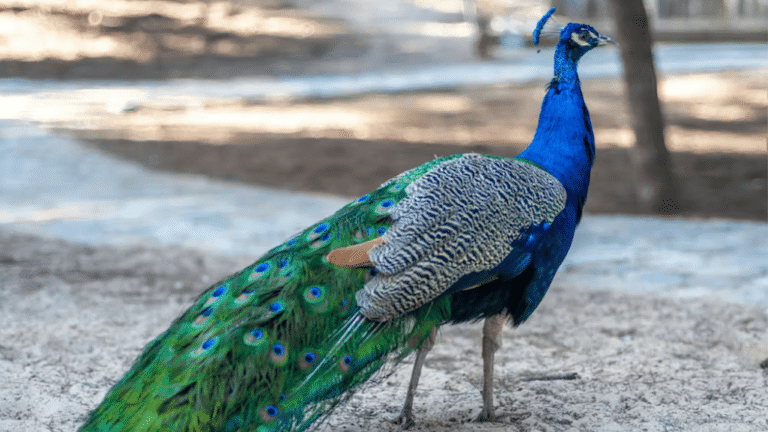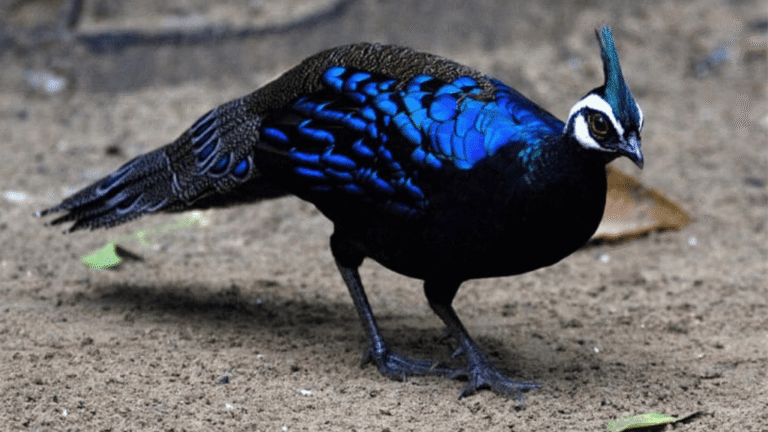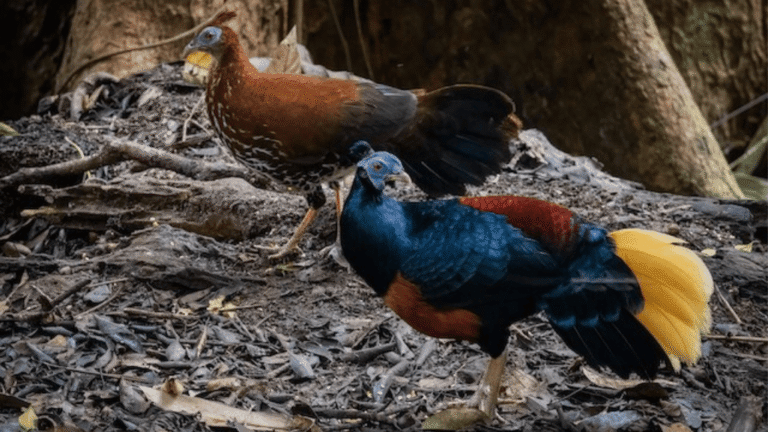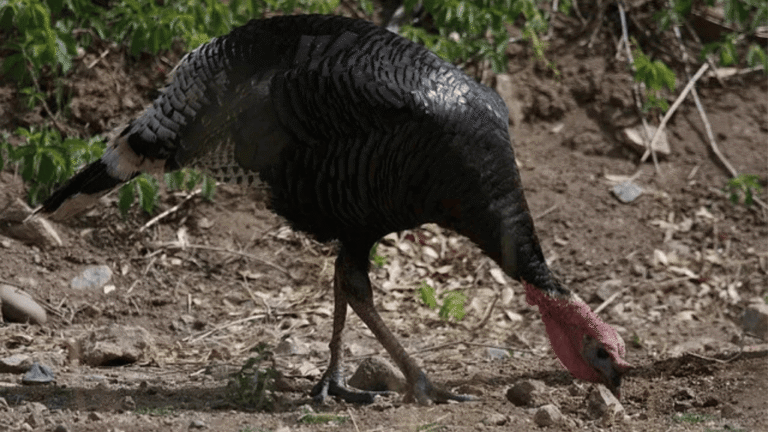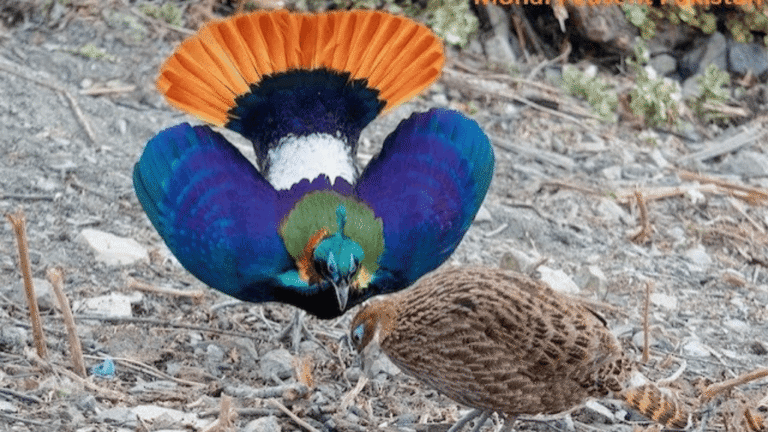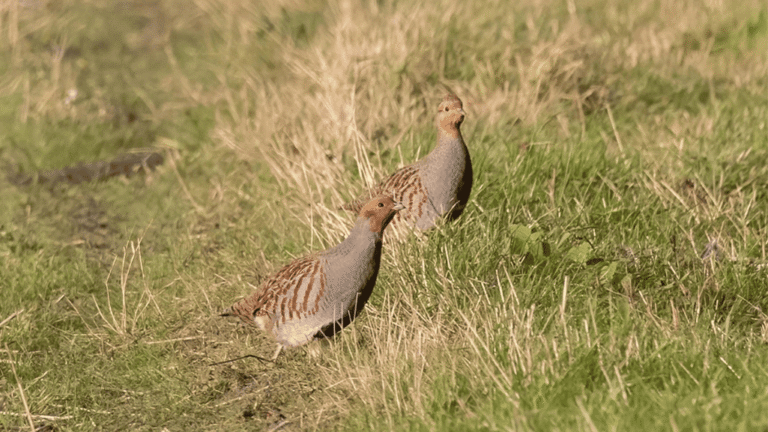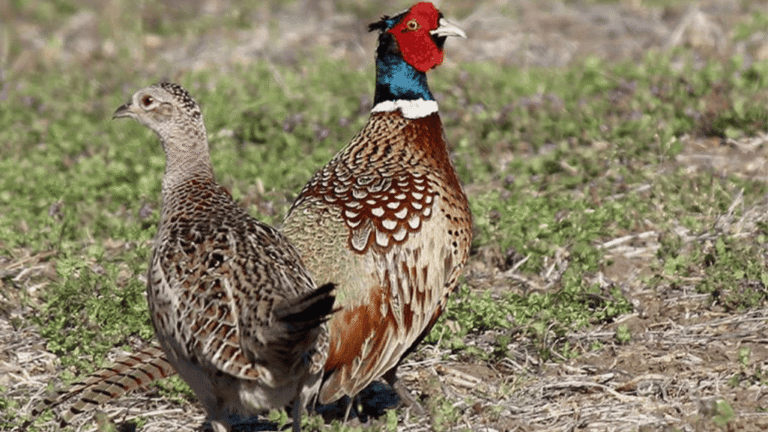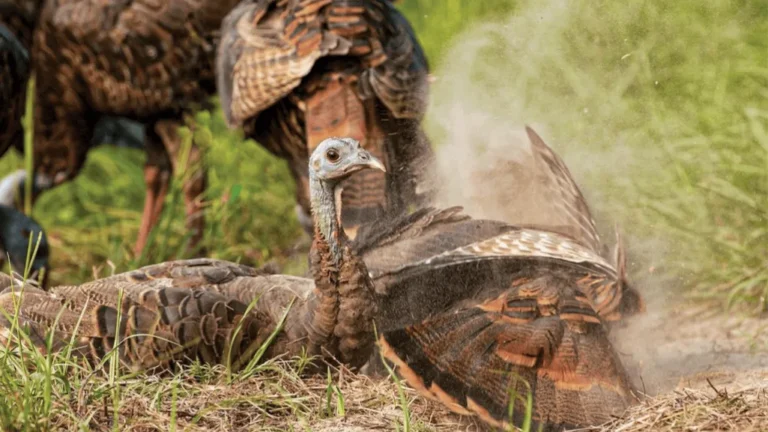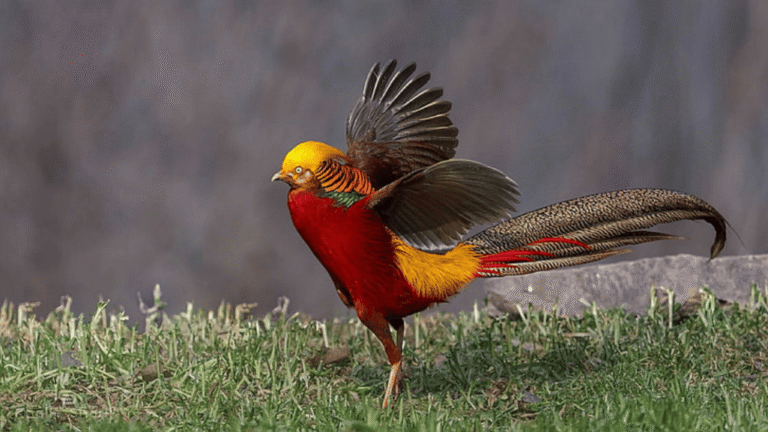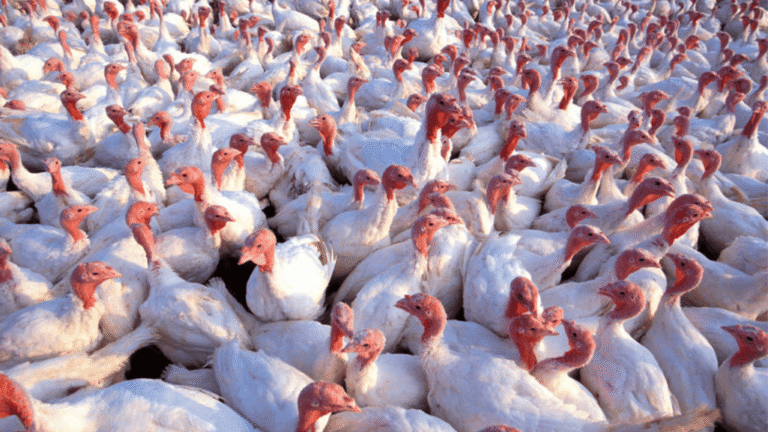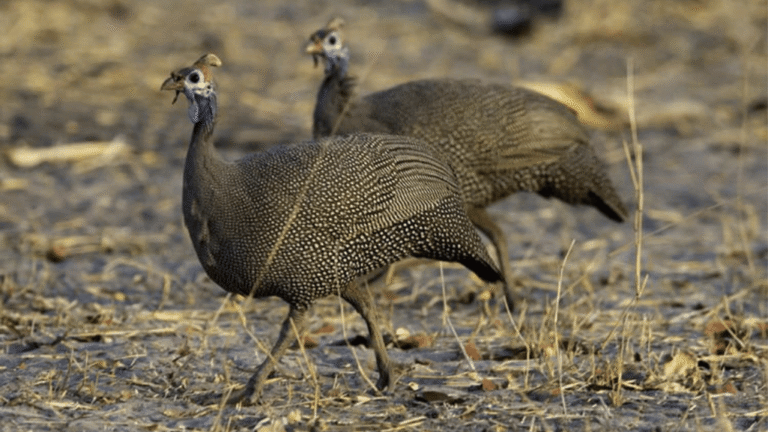The Western Capercaillie, also known as the Eurasian capercaillie, is a majestic bird that holds the title of being the largest member of the grouse family. With males weighing up to 6.5 lbs, their impressive size captures the attention of nature enthusiasts and birdwatchers alike.
This magnificent bird is native to Europe, specifically found in the coniferous forests of northern Europe and Asian mountains. Despite its size, the Western Capercaillie is categorized as “Least Concern” in terms of conservation status, ensuring its continued presence in these breathtaking habitats for future generations to enjoy.
Key Takeaways:
- The Western Capercaillie is the largest member of the grouse family.
- It is native to Europe and found in coniferous forests in northern Europe and Asian mountains.
- The bird is categorized as “Least Concern” in terms of conservation status.
Western Capercaillie Habitat
The Western Capercaillie, an impressive bird of the grouse family, is found in the coniferous forests of northern Europe and Asian mountains. This magnificent species has specific habitat preferences that are essential for its foraging, breeding, and nesting activities. The Western Capercaillie thrives in old, open pine forests, particularly those with lush ground cover, including heather. During the summer season, it may also venture into mature Oakwood areas. These unique habitats provide the necessary resources and conditions for the Western Capercaillie’s survival and well-being.
Within the Western Capercaillie’s preferred habitat, the coniferous forests, the bird’s distinctive adaptations are perfectly suited for its way of life. It has evolved to thrive in these environments, making them an integral part of its existence. The combination of old, open pine forests and lush ground cover provides essential elements such as ample food sources, appropriate nesting sites, and secure breeding grounds. These habitat features contribute to the overall health and resilience of the Western Capercaillie population.
Western Capercaillie Diet
The Western Capercaillie is an omnivorous bird that maintains a varied diet, ensuring its nutritional needs are met. Let’s explore the components of its diet:
- Buds: The Western Capercaillie feeds on buds, enjoying the tender growth of various plants.
- Shoots: It also consumes shoots, indulging in the fresh and succulent parts of different vegetation.
- Seeds: Seeds play a role in the bird’s diet as well. It feeds on a variety of seeds from different plant species.
- Berries: The Western Capercaillie has a penchant for berries, relishing their juicy and nutritious content.
- Pine needles: Pine needles are not just decorative; they serve as a significant food source for the Western Capercaillie.
- Mating season: During the mating season, males may also consume small invertebrates.
The availability of these food sources within the Western Capercaillie’s habitat, especially the abundance of pine trees and shrubby vegetation, determines the accessibility of its diet. The bird’s ability to find and acquire these essential resources is crucial for its overall well-being and survival.
By adapting to an omnivorous diet, the Western Capercaillie demonstrates its flexibility in finding sustenance within its forested environment. This enables the species to adapt to changing conditions and maintain its population.
Western Capercaillie Population and Conservation
The Western Capercaillie, with its majestic presence and impressive size, has a stable population and is not currently a conservation concern. However, one specific subspecies, the Cantabrian capercaillie, faces significant threats due to habitat destruction and fragmentation. This has resulted in a decline in the populations of the Cantabrian capercaillie, prompting conservation efforts to protect and restore its habitat.
The Cantabrian capercaillie is listed as endangered in certain areas, including the United States, emphasizing the urgency of conservation measures to ensure its survival. These efforts aim to mitigate the detrimental impact of habitat loss and fragmentation on the subspecies, addressing the primary threats it faces.
Cantabrian Capercaillie Conservation Efforts:
- Implementation of habitat protection measures to safeguard Cantabrian capercaillie populations.
- Restoration initiatives to recreate suitable habitat conditions for the subspecies.
- Collaboration with local communities and stakeholders to raise awareness and support for conservation efforts.
- Monitoring and research programs to gain a better understanding of Cantabrian capercaillie populations and their habitat requirements.
By prioritizing conservation actions that address the unique challenges faced by the Cantabrian capercaillie, scientists, conservation organizations, and government entities seek to secure the future of this endangered subspecies and contribute to the overall preservation of the Western Capercaillie population.
| Conservation Efforts | Impact |
|---|---|
| Habitat protection measures | Preserving crucial habitats and limiting further loss |
| Habitat restoration initiatives | Creating suitable conditions for the Cantabrian capercaillie to thrive |
| Community engagement | Raising awareness and fostering support for conservation |
| Monitoring programs | Enhancing understanding of population trends and habitat requirements |
Western Capercaillie Breeding
The breeding behavior of the Western Capercaillie is a remarkable display of courtship rituals performed by males to attract females. These elaborate displays involve a combination of tapping, gurgling, drum rolls, and various vocalizations, creating a mesmerizing spectacle within the forest. Such behaviors showcase the male’s strength, agility, and prowess to win over potential mates.
The competitive nature of Western Capercaillie breeding is evident in the aggressive behaviors displayed by males. They engage in fierce fights with rival suitors, battling for dominance and the opportunity to court females. These battles may involve chasing, wing flapping, and physical confrontations, highlighting the importance of securing the most suitable breeding territories and resources.
Once a female is successfully courted by a male, she lays a clutch of five to eight eggs in early May. The hens take on the responsibility of incubating the eggs, ensuring their warmth and protection until they hatch. During this incubation period, the females remain vigilant, camouflaged within their surroundings to avoid detection by predators.
After hatching, the chicks rely heavily on their mothers for survival. The devoted hens guide their offspring through the forest, teaching them essential foraging skills and providing necessary protection. This period of maternal care is crucial for the growth and development of the young Western Capercaillie, preparing them for independent living within the forest.
The Western Capercaillie Breeding Cycle:
- Males perform courtship displays to attract females
- Males engage in aggressive behaviors to establish dominance
- Females lay 5-8 eggs in early May
- Females incubate the eggs
- Hens raise and protect the chicks
Through these intricate breeding behaviors, the Western Capercaillie ensures the continuation of its species and maintains a delicate balance within its forest habitat.
Cantabrian Capercaillie 
The Cantabrian capercaillie is a subspecies of the Western Capercaillie found in northern Spain. It primarily inhabits mountains in the Cantabrian range and is adapted to the specific habitat conditions of the region. Unlike other Western Capercaillie subspecies, the Cantabrian capercaillie is not as reliant on pine forests and can be found in deciduous woodland, mature beech forests, and mixed forests of beech and oaks.
Despite being a subspecies of the Western Capercaillie, the Cantabrian capercaillie has distinct habitat preferences that set it apart from its counterparts. While the Western Capercaillie generally favors coniferous forests, the Cantabrian capercaillie adapts to the diverse habitat types found in the Cantabrian Mountains.
To further explore the habitat range of the Cantabrian capercaillie, let’s take a closer look at the specific habitats it occupies:
1. Deciduous Woodland:
The Cantabrian capercaillie can be found in deciduous woodland areas within its range. These woodlands consist of trees that shed their leaves seasonally, creating an environment with varying levels of light and vegetation throughout the year. The bird’s ability to adapt to this type of habitat highlights its versatility in seeking suitable foraging and nesting grounds.
2. Mature Beech Forests:
Mature beech forests provide important habitat for the Cantabrian capercaillie. These forests offer a dense canopy cover, creating a favorable environment for the bird’s nesting and breeding activities. The abundance of beech trees and the associated shrubby understory provide essential food sources and suitable hiding places for the birds.
3. Mixed Forests of Beech and Oaks:
The Cantabrian capercaillie also thrives in mixed forests consisting of beech and oak trees. These forests offer a diverse range of vegetation and provide a variety of feeding options for the birds. The combination of beech and oak trees creates an intricate ecosystem that supports the Cantabrian capercaillie’s unique requirements.
| Habitat Type | Description |
|---|---|
| Deciduous Woodland | Areas with seasonally shedding trees, providing varying light and vegetation conditions. |
| Mature Beech Forests | Dense canopies and abundant beech trees, providing suitable nesting and breeding grounds. |
| Mixed Forests of Beech and Oaks | Combination of beech and oak trees, creating a diverse ecosystem and offering various food sources. |
Threats to the Western Capercaillie
The Western Capercaillie, like many other animal species, faces various threats that endanger its population and habitat. These threats include:
Habitat Destruction, Loss, and Fragmentation
The loss of suitable forest habitats due to deforestation and urbanization is a significant threat to the Western Capercaillie. As forests are cleared for agriculture, infrastructure development, and human settlements, the bird’s habitat shrinks, limiting its ability to find food and suitable breeding grounds. Fragmentation of forests also disrupts the connectivity between different areas, impacting the bird’s movement and genetic exchange.
Overhunting
Past overhunting has posed a significant threat to the Western Capercaillie population. The bird was historically hunted for its meat, feathers, and display purposes. Excessive hunting, combined with habitat loss, led to a decline in population numbers. Legal protections and hunting restrictions have been implemented to control hunting activities and prevent the further decline of the species.
Conservation Efforts
Conservation efforts are crucial to protect and preserve the Western Capercaillie. These efforts focus on various strategies, including:
- Habitat Protection and Restoration: Establishing nature reserves, national parks, and protected areas to safeguard the existing forests and provide suitable habitat for the bird. Restoration programs aim to regenerate degraded habitats and create corridors for improved connectivity.
- Illegal Hunting Prevention: Implementing strict regulations, increasing surveillance, and awareness campaigns to discourage illegal hunting and promote responsible hunting practices.
- Educational Initiatives: Raising public awareness about the importance of preserving forest ecosystems and the role of the Western Capercaillie within them. Public involvement and engagement are crucial for the long-term conservation of the species.
By addressing these threats and implementing effective conservation measures, we can ensure the survival and well-being of the Western Capercaillie for future generations.
| Threat | Description |
|---|---|
| Habitat Destruction, Loss, and Fragmentation | Clearing of forests for agriculture, urbanization, and infrastructure development leads to the loss and fragmentation of the bird’s habitat, affecting its ability to find food and suitable breeding grounds. |
| Overhunting | Past overhunting for meat, feathers, and display purposes has significantly impacted the Western Capercaillie population. Hunting restrictions and regulations are necessary to prevent further population decline. |
| Habitat Protection and Restoration | Establishing protected areas, nature reserves, and implementing habitat restoration programs to safeguard existing forests and create suitable habitats for the bird. |
| Illegal Hunting Prevention | Enforcing strict regulations, increasing surveillance, and raising awareness to deter illegal hunting and promote responsible hunting practices. |
| Educational Initiatives | Creating public awareness about the importance of forest conservation and the role of the Western Capercaillie within ecosystems, encouraging public involvement in conservation efforts. |
Conclusion
The Western Capercaillie, Europe’s largest woodland grouse, is a remarkable bird that thrives in specific forest habitats. Its adaptability to these environments is evident in its habitat preferences, diet, and breeding behaviors. While certain subspecies of the Western Capercaillie face conservation concerns, the overall population remains stable.
Conservation efforts play a crucial role in ensuring the long-term survival of this impressive bird species. Protecting and restoring the bird’s forest habitats are vital to maintain suitable breeding grounds and food sources. Additionally, measures to prevent illegal hunting are essential in preserving the Western Capercaillie population.
The Western Capercaillie not only adds to the biodiversity of forest ecosystems but also represents an integral part of Europe’s natural heritage. By understanding their needs and working towards their conservation, we can foster a sustainable future for this magnificent bird species.
FAQ
What is the Western Capercaillie?
The Western Capercaillie, also known as the Eurasian capercaillie, is the largest member of the grouse family and is native to Europe.
Where is the Western Capercaillie found?
The Western Capercaillie is found in coniferous forests in northern Europe and Asian mountains.
What is the diet of the Western Capercaillie?
The Western Capercaillie is an omnivorous bird, feeding on a variety of plant materials, including buds, shoots, seeds, berries, and pine needles.
Is the Western Capercaillie population stable?
Yes, the Western Capercaillie population is currently stable and is not considered a conservation concern.
What is the breeding behavior of the Western Capercaillie?
The Western Capercaillie breeding behavior is characterized by elaborate courtship displays performed by males to attract females. They engage in various vocalizations and aggressive behaviors during this time.
What is the Cantabrian Capercaillie?
The Cantabrian capercaillie is a subspecies of the Western Capercaillie found in northern Spain, primarily inhabiting mountains in the Cantabrian range.
What are the threats to the Western Capercaillie?
The Western Capercaillie faces threats such as habitat destruction, loss, and fragmentation, as well as overhunting in the past.
What is the conclusion about the Western Capercaillie?
The Western Capercaillie is an impressive bird species that plays a vital role in forest ecosystems. While certain subspecies face conservation concerns, the overall population remains stable, and conservation efforts are necessary to ensure their long-term survival.

